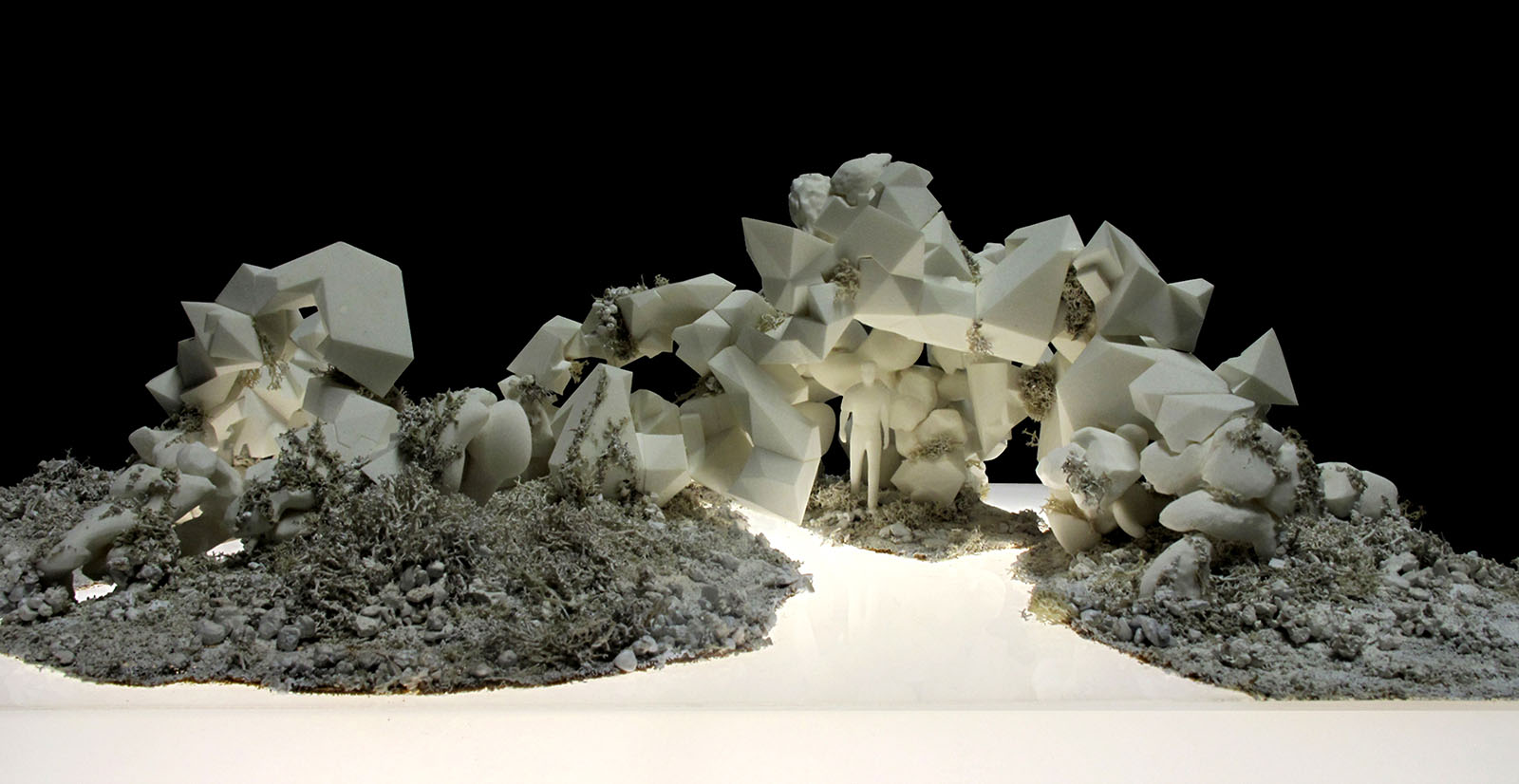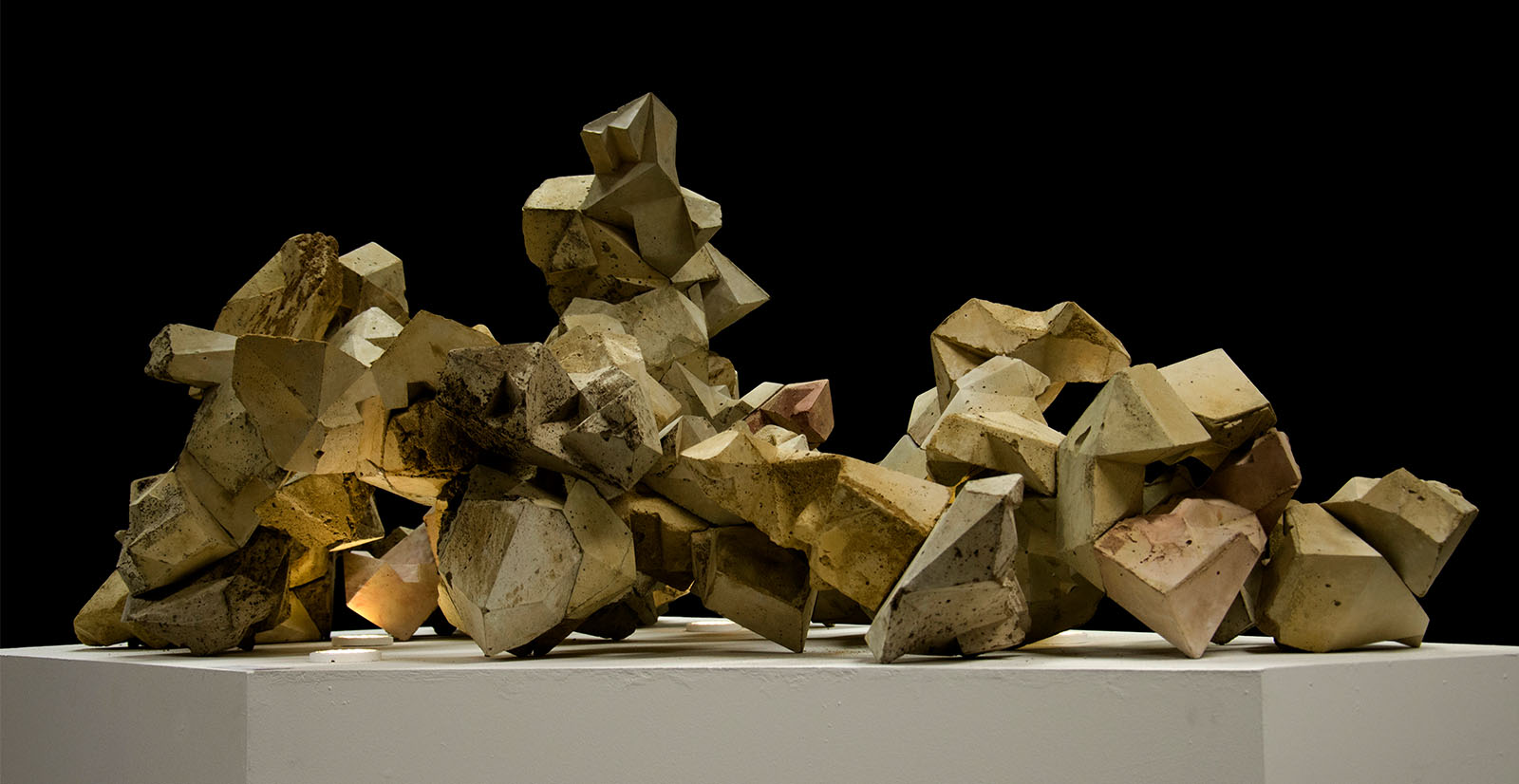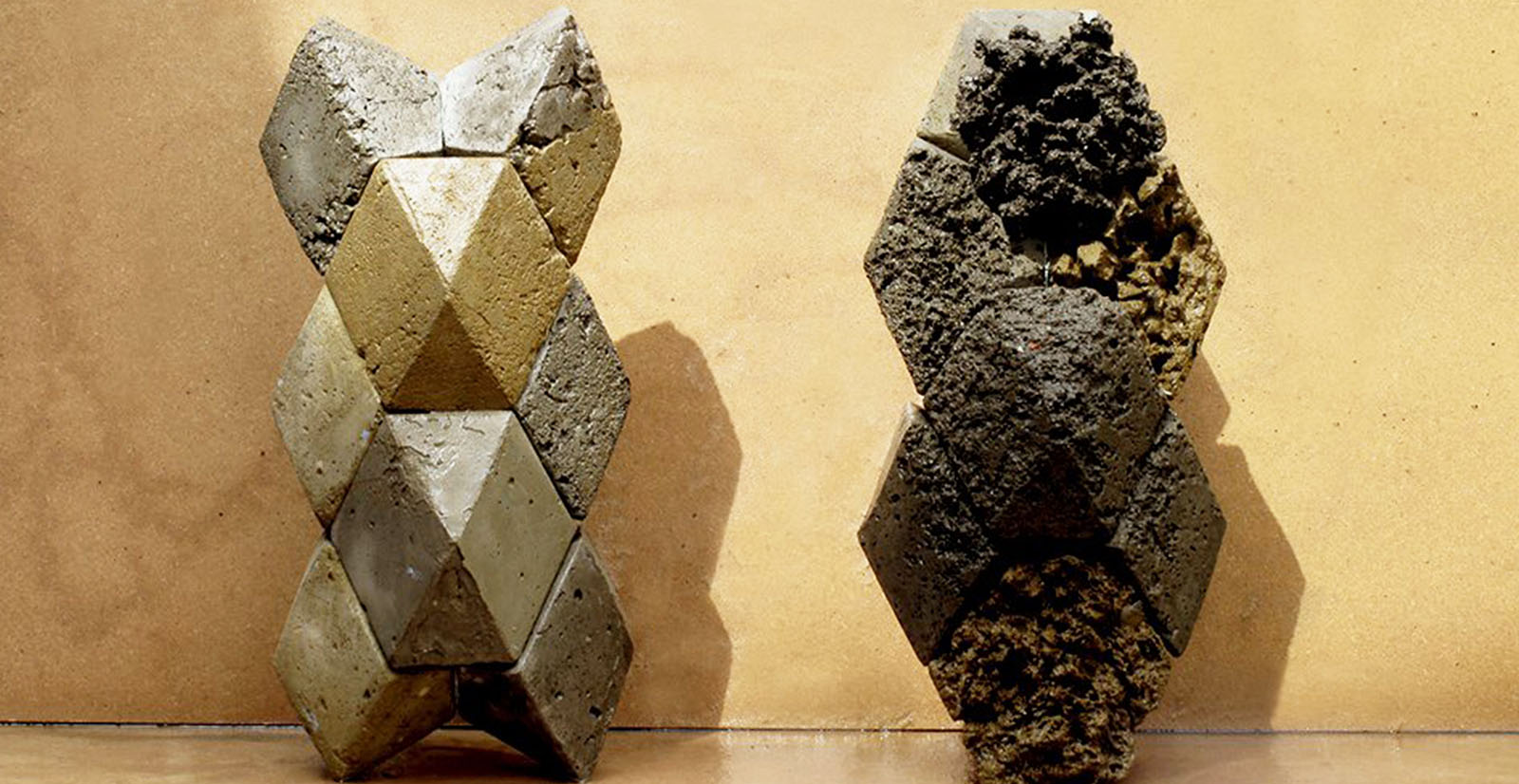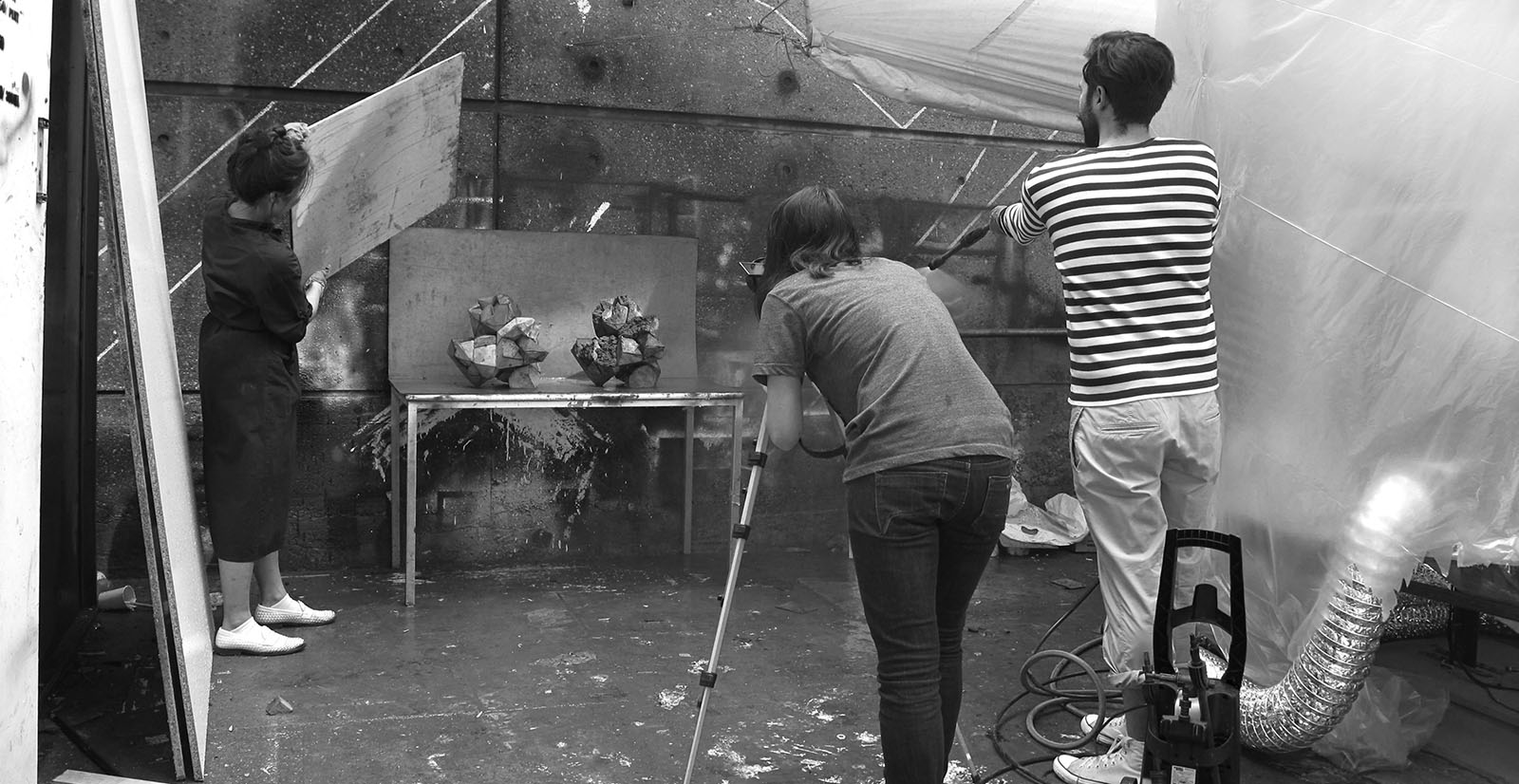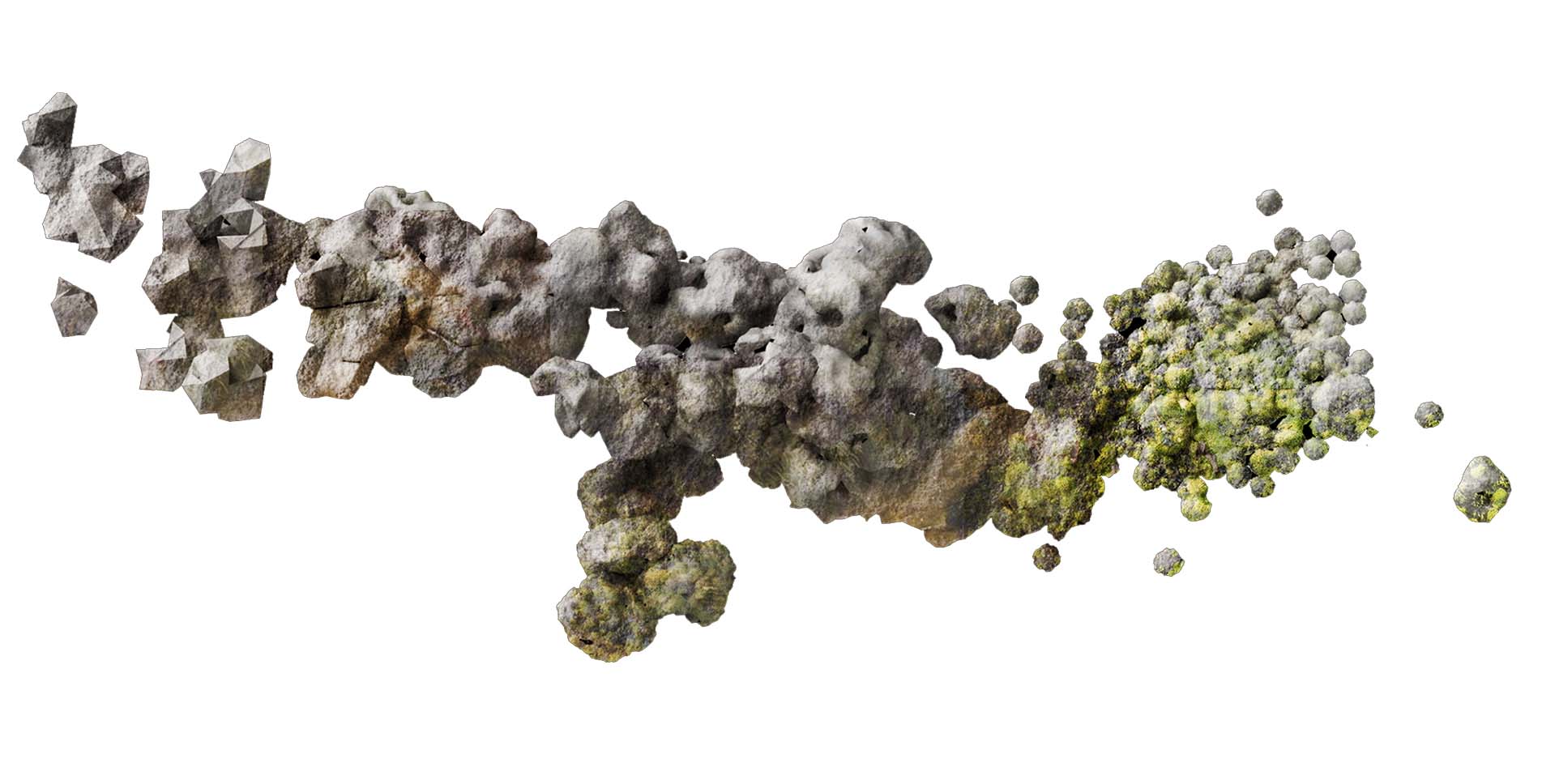
Timescape is a project that morphs geometric sculptures with nature exploring notions of the picturesque and the potential of architectural decay. The virtual side of the project explores the geometry of interlocking bricks, generated from 3D pieces cast from local materials,such as earth, cork, sand and cement, that will be decomposed from exposure to high pressures of water. The shifting morphological shape means that some parts will maintain a concrete structural base, while others are more fragile, porous and textural. During the process of exposure, the architecture is sacrificed to wider landscape, creating a series of informal spaces that are both intriguing and uncertain.
Using cement or sand, toether with either earth or cork, the density of material changes depending on the amount of cork added. Moreover, the amount of textures, structure, thermal potential, and spatial quality generated by this kind of materialization opens up a broad field of exploration and research. It is important to note that by mixing cork with concrete can increase the thermal performance of concrete.
Casting also allows for a hands-on craft rooted in an understanding of traditional and contemporary computational concepts. This type of creative environment allows us to develop a process specific to the technology and materials available, a practice that is reflected in the layers of the final design.
By considering how to control material energies, the project is interested in the debris created from the relationship between handmade, digital fabrication, and sculpture. We seek to generate a particular architecture that is transformed by its own debris and decay, an architecture of accumulation of varying material energies, some spent and others vital. It will have structures that initiate the form, but over time give way to other structural components. As one material energy saps away and others take over, the architecture may begin to rake and twist, whatever shape it takes, to reveal its origins in the landscape. In this way, the space may eventually be sacrificed to the wider landscape. What is left is an architecture of informal spaces, intriguing and uncertain. It is not known when one structure will collapse or be taken by other natural structures.
A series of autonomous sculptures and structures are located along the riverbank in Coimbra, Portugal. The sculptures work to connect the urban fabric with the local National Park, which has largely been ignored by local authority and planners.
The project explores the idea of the picturesque and the potential for architectural decay in an immersive natural environment. Architecture must embrace its own temporality through a release from perfection that limits the effects of change over time. The only truly finished building is a heap of rubble.
The specific site conditions, the sharp / edgy urban fabric and the morphogenesis of nature helped to define a boundary for developing a digital craft able to interface the transitory moment created in this in-between space. The digital aspect of the project explores the idea of a brick able to interlock, be structural, and clad. The digitally generated pieces are cast with materials like earth, cork, sand, and cement which, used in different ratios, led to new kinds of textures and material constructs through deliberate decomposition by water jet. Thus, the transitions between clearly defined and morphing junctions are achieved within the same system. The concrete-based parts maintain their structural integrity while more porous parts, because of the amount of cork in their composition, break down when exposed to water pressure.
